Examining the Google Mini
The Mini itself is actually your run-of-the-mill 1U server, with the chassis painted blue.

The front of the machine features both the front mounting hardware as well as an exposed grill for ventilation.

Click to enlarge.
Although it is tough to see from the picture below, behind the grill is a fully functional CD-ROM drive that you can’t (and aren’t meant to) access without taking apart the machine:
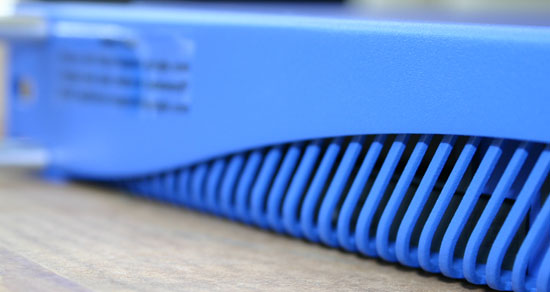
Behind this grill is a slim-line CD-ROM drive, not meant to be used by the user.
Looking at the rear of the machine, you get a better indication of what the Google Mini actually is (hardware-wise):

You see two PS/2 ports (keyboard/mouse), two USB ports, a parallel port, a serial port, VGA output, two Ethernet ports (color-coded to match the cables) and a single slot cover.

The two Ethernet ports are color-coded to match the cables provided with the Google Mini.
Getting Inside the Mini
It’s very clear that Google doesn’t want you playing around with the innards of the Mini as most of the screws have no usable head:

The grey screw above the rightmost Ethernet port features no usable head. Luckily, removing the screw only requires a little patience and some pliers.

The screw is threaded - it just can’t be undone with a regular screwdriver.
The mounting brackets are attached to the Mini using regular screws, so those can be installed/removed without any trouble. Once you get the screws off of the back of the Mini, there’s one last step to getting inside the unit.
The top of the Mini is actually one large piece of plastic with adhesive on its back that not only makes the unit look better, but also acts as another safeguard against curious users gaining access to the internals of the machine. Peeling back the front edge of the top breaks the adhesive and allows us to slide off the front cover.
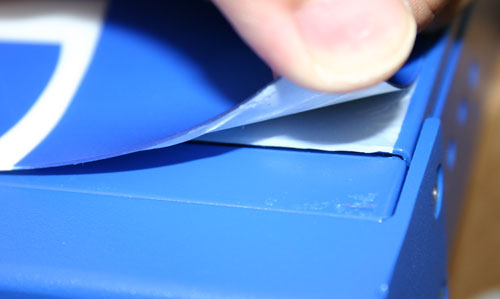
With the cover off, the internals of the Mini are no different than your standard 1U server. There are three drive bays and a large shroud channeling air to the processors underneath.

Click to enlarge.
A closer look at the fan shroud tells us the original manufacturer of the server, Gigabyte:
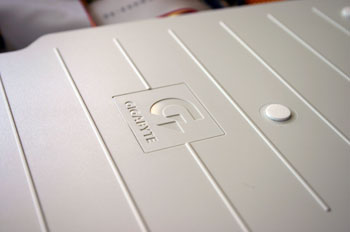
Removing the shroud reveals a pair of processors and the rest of the motherboard. The motherboard, like the server, is manufactured by Gigabyte:

The CPU heatsinks themselves also carry the Gigabyte brand:
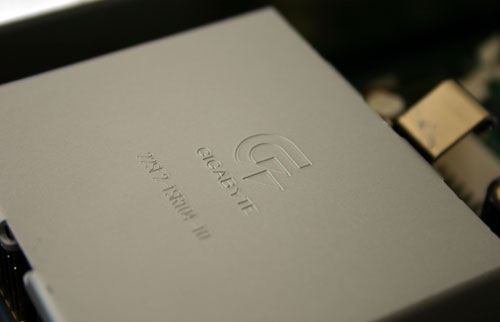
The heatsinks have no fans on them. Instead, they rely on the chassis fans and the fan shroud to remove heat from them.
We were curious to see what was under those heatsinks, so of course, we pulled one off:
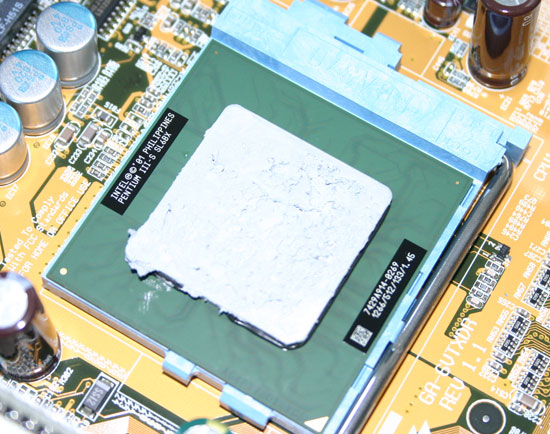
The Google Mini uses a pair of Pentium III-S processors running at 1.26GHz. It’s been a while since we’ve seen these used in a server, but they are most likely more than enough for the job at hand.
The motherboard features a VIA chipset, as is evident by the VIA South Bridge pictured below:
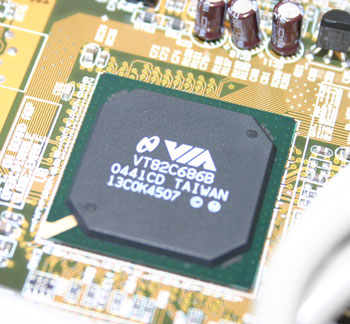
All of the drive bays in the server feature PATA interfaces and are handled directly by a Promise IDE RAID controller:
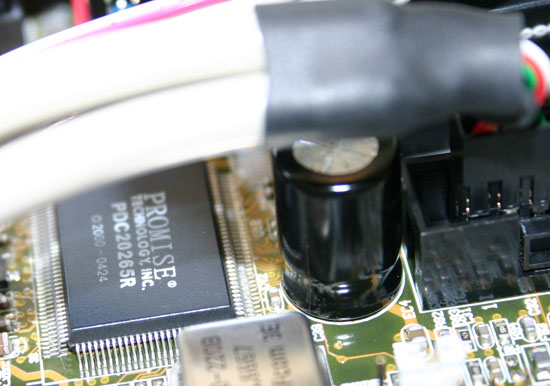
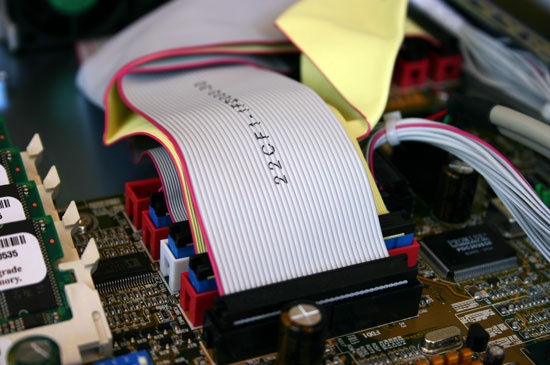
The system shipped with a single hard drive, a 120GB Seagate Barracuda 7200.7.
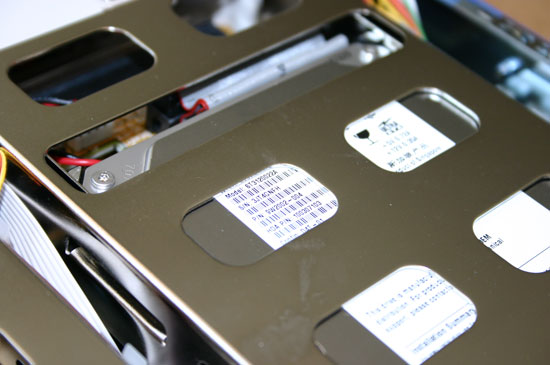
The Google Mini ships with 2GB of PC133 SDRAM (4 x 512MB sticks); interestingly enough, the memory uses Micron chips and is labeled as Dell memory.

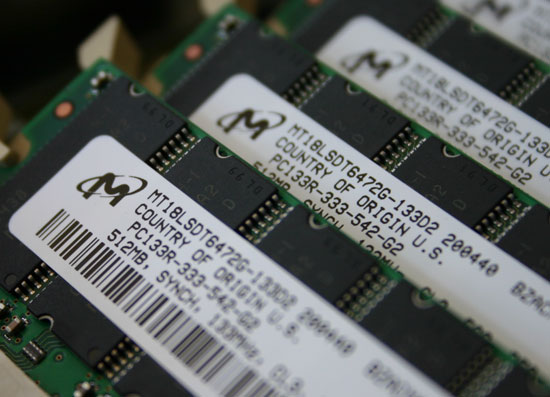
Powering the system up reveals a normal AMI BIOS, but of course, entering the BIOS is password protected - and you’re not given the password.
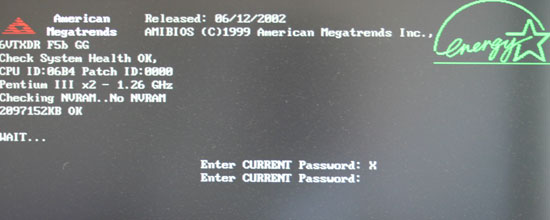






























48 Comments
View All Comments
zmagaw - Tuesday, September 6, 2005 - link
there are a few methods - including creating separate collections by user type filtering out or in urls by pattern matchingBrickster - Wednesday, September 7, 2005 - link
Actually, I found you can achieve that with an upgrade... of course :)http://www.google.com/enterprise/feature_compariso...">http://www.google.com/enterprise/feature_compariso...
Here is the Appliance feature:
Secure Content API - Search across secure content using Google's Authorization API to integrate into existing access control systems.
Looks like the Mini doesn't support secured content.
zmagaw - Tuesday, September 6, 2005 - link
we signed a non-disclosure that said we couldnt open the google search appliances... although the hardware looks simple and run of the mill... the software is not... a lot of open source stuff on that puppy but execution is everything... the support we got though was horrible... 2 day respose times... so not easy because the software is full of bugs that are not easily diagosed... hardware failures - disks... and speedy google working with large corporations has been seen as a daunting task for the bright people at Googlenadirshakur - Tuesday, September 6, 2005 - link
What is the warranty on these puppies. Hey didn't Anandtech void there's by opening it like that and showing the whole world they did.flatblastard - Tuesday, September 6, 2005 - link
Thats okay, if the RAM/CPU goes bad, I'll sell them my old p3 450Mhz system I got laying around for spare parts. Heck, I'll even give them a sweet deal.....$1999.95 and I'll even throw in Windows 98 (not SE)..... ;)deathwalker - Tuesday, September 6, 2005 - link
Is this really important when it comes to your experience when visiting the AnandTech website? I guess I'll get blasted for that statement!! So much really good stuff that could be the news of the day...this article is just cannon foder...something to fill the need for a new article to read on this day.Jason Clark - Tuesday, September 6, 2005 - link
Guys, we don't crawl every day :) It crawls 3-4 times a week, since large articles are on the front page, searching for them is pretty unnecessary.Gooberslot - Tuesday, September 6, 2005 - link
Is it normal for servers to give you no control like that? I wouldn't want anything that had a bios password that I couldn't change.I'm also surprised that you can even get a P3 or a P3 motherboard anymore.
zmagaw - Tuesday, September 6, 2005 - link
i think when you are buying appliances yes... the reason google does this... you would be able to decompile their software on that hard-drive which is formatted in a google HD format - or so I have heardsmn198 - Tuesday, September 6, 2005 - link
You could remove BIOS password but then you loose all the BIOS info as well and maybe they are doind something special there.